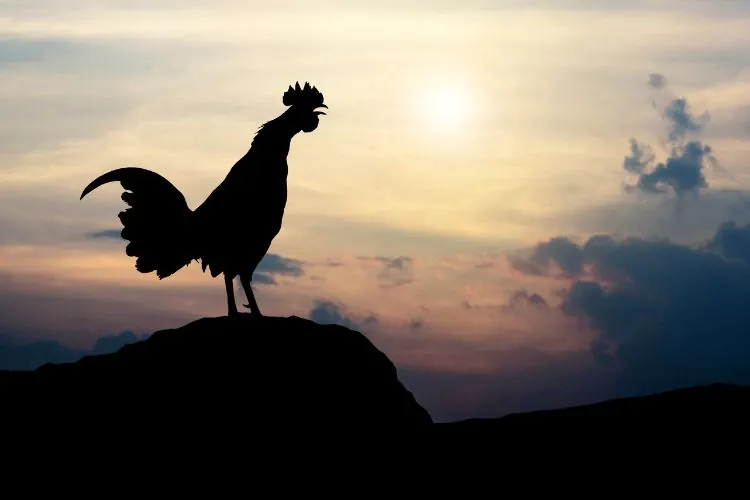Adverts
Amidst the silent vastness of the deserts, where the scorching heat and scarcity of water seem to challenge the very essence of life, fascinating stories of resilience and adaptation emerge. Deserts, with their austere beauty and surreal landscapes, are home to an incredible variety of plants and animals that have developed impressive strategies to survive in such inhospitable conditions. This arid universe is a true laboratory of extreme survival, where nature reveals all its ingenuity.
Adverts
In this article, we explore the secrets behind life in the desert, highlighting the innovative adaptations that allow species to thrive where most would not. From plants that store water in amazing ways to animals that regulate their temperatures efficiently, each organism has a unique set of skills that ensure its survival. These adaptations not only ensure the survival of species, but also offer valuable insights into resilience and sustainability, concepts that are increasingly relevant in an ever-changing world.
Adverts
Get ready for an immersive journey through one of the most extreme environments on the planet. Learn how towering cacti and agile animals master the art of living with minimal resources. Discover the mysteries hidden beneath the hot sand and learn how life can flourish in the most unexpected places. 🌵🌞 The magic of the desert lies in its ability to defy expectations, and studying it reveals precious lessons that transcend the boundaries of its arid horizons.
The Inhospitable Charm of the Desert
The desert is one of the most extreme and challenging environments on Earth, where life seems to struggle against all odds. Under a relentless sun, temperatures can reach scorching peaks during the day and drop dramatically at night. However, what is most surprising is the diversity and resilience of life that thrives in this arid and often desolate landscape. The adaptations of the plants and animals that inhabit deserts are true testaments to nature’s ingenuity, revealing survival strategies that often border on the surreal.
Plant Adaptation Strategies
Surviving with Minimal Water
Desert plants have developed a variety of adaptations to cope with water shortages. Among the most fascinating strategies is their ability to store water. Cacti, for example, have specialized tissues that allow them to retain large amounts of water during rare rains. In addition, their leaves have turned into spines, reducing water loss and protecting them from thirsty herbivores.
CAM Photosynthesis: The Secret of Succulents
Another notable adaptation is CAM (Crassulacean Acid Metabolism) photosynthesis, a strategy that allows succulent plants to open their stomata at night, when evaporation is lowest. During the night, they absorb carbon dioxide and store it in the form of acids, which are used for photosynthesis during the day. This approach minimizes water loss and is an essential tactic for surviving in the scorching desert.
The Art of Animal Survival
Heat Avoidance Behaviors
Desert animals have also developed ingenious strategies to deal with the intense heat. Many are nocturnal, taking advantage of the drop in temperature to hunt and carry out other activities. The fennec fox, a desert fox, is a perfect example, with its large ears that dissipate body heat and help it detect prey in the dark.
Use of Underground Shelters
The use of underground shelters is a common tactic among desert dwellers. Animals such as meerkats dig burrows to escape the heat during the day. These shelters provide a cooler, more humid environment, essential for conserving water and energy.
Challenging Soil Conditions
Overcoming Soil Dryness
Desert soil is notoriously poor in nutrients and can be extremely dry, presenting an additional challenge for plants. Many have developed deep roots that extend several meters deep in search of water. Others, such as the desert plant Welwitschia, have wide, shallow roots that quickly absorb moisture from rare rainfall.
Symbiosis as a Survival Strategy
Symbiosis is another strategy used by desert organisms. Certain plants establish symbiotic relationships with mycorrhizal fungi, which help in the absorption of essential nutrients. This partnership increases the chances of survival in such an inhospitable environment.
Defense and Attack Strategies
Physical and Chemical Defenses
To survive in such a hostile environment, many organisms have developed physical and chemical defenses. For example, some plants produce bitter or toxic chemicals to discourage herbivores. Others have spines or hard shells that protect them from hungry predators.
Camouflage and Mimicry
Camouflage is an essential tactic for many desert animals, allowing them to hide from predators and prey. Lizards and insects often display colors that blend in with their sandy surroundings. In addition, mimicry is a strategy used by some species to imitate others, either to scare off predators or attract prey.
The Influence of Climate and Seasons
Adaptations to the Rain Cycle
The desert, despite its aridity, is not completely devoid of rain. When storms do occasionally arrive, they bring a temporary burst of life. Some plants, known as desert annuals, spend most of the year as dormant seeds, germinating quickly after rains and completing their life cycle in a matter of weeks.
The Influence of Desert Winds
Desert winds play a crucial role in shaping the landscape and dispersing seeds. Plants and animals have learned to use these air currents to their advantage. Some seeds have winged structures that allow them to be carried by the wind to new territories, while certain birds of prey use thermal currents to glide over vast areas in search of prey.
Mysterious Ecological Interactions
Tense Predator-Prey Relationships
The balance between predator and prey in the desert is a complex and fascinating dance. Resource scarcity leads to intense and often ferocious interactions. Predators like the rattlesnake have developed ambush strategies, lying still and waiting for the right moment to strike. Prey, on the other hand, rely on agility and constant alertness to avoid capture.
Unexpected Cooperation
Not all interactions in the desert are conflictual. Some species have developed cooperative relationships to increase their chances of survival. Meerkats, for example, work in groups, using lookouts to warn of approaching predators, while other members of the group forage for food or care for young.
The Enduring Legacy of Sandstorms
Impact on Desert Ecology
Dust storms, while devastating, play an important role in the desert ecosystem. They can reshape the landscape, redistribute nutrients, and even influence global climate. Despite the challenges they present, these storms are an integral part of desert dynamics, creating new opportunities for life in a never-ending cycle of destruction and renewal.
The Resilience of Desert Ecosystems
The resilience of desert ecosystems is truly remarkable. Despite extreme conditions, life finds a way to persist. The survival strategies developed by desert plants and animals are testament to nature’s ability to adapt and innovate, proving that even in the most inhospitable places, life finds a way to thrive. 🌵
- Nocturnal opening of stomata in CAM plants
- Water storage in specialized tissues
- Use of caps to avoid heat
- Deep roots to access groundwater
- Camouflage and mimicry for protection and hunting
Conclusion
In conclusion, survival in desert environments, as we can see, depends on a fascinating set of adaptation strategies developed by plants and animals. First, desert plants, such as cacti, adopt tactics such as water storage and CAM photosynthesis to cope with water scarcity. In addition, animals such as camels use physiological and behavioral adaptations to thrive under the scorching sun and lack of water. 🌵
On the other hand, life in the desert is not only a matter of individual adaptation, but also of cooperation and balance in the ecosystem. For example, the symbiotic relationship between some plants and insects ensures pollination, which is essential for plant reproduction. Furthermore, desert biodiversity, although it may seem limited, plays a crucial role in maintaining ecological balance.
In short, understanding how species thrive in such harsh conditions not only inspires wonder, but also offers valuable lessons about resilience and innovation. Protecting these fragile ecosystems is therefore essential to preserving biodiversity and the knowledge they contain. Understanding these survival strategies can inspire innovations in biotechnology and environmental conservation, highlighting the importance of a desert that, at first glance, may seem inhospitable, but is in fact an example of extreme adaptation and survival.




